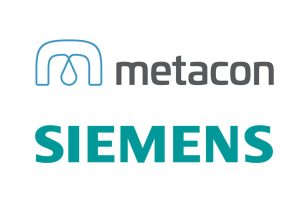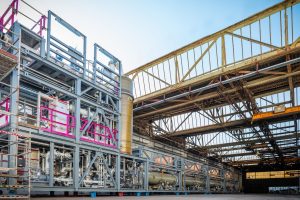With funding from The Henry Royce Institute through its Industrial Collaboration Programme, Cranfield’s specialist facilities in the Surface Engineering and Precision Centre (SEPC) are set to advance understanding of how materials behave and react with hydrogen, paving the way for wider use of this clean fuel.
Professor Dame Helen Atkinson, Pro-Vice-Chancellor of the School of Aerospace, Transport and Manufacturing, welcomed the news: “Hydrogen is one of the most exciting clean energy developments but it simply can’t scale up without this crucial work to make the production, transport and storage of it cost-effective and feasible. This funding will enable Cranfield’s specialist facilities and expertise in this area to support the developments that industry absolutely needs to move forward with a net zero agenda.”
New facility to test water vapour corrosion
Adapting existing engines to run with hydrogen or Sustainable Aviation Fuels could be an effective solution to reduce CO2 emissions from transport, as hydrogen combustion only produces water vapour and nitrogen oxides. But water vapour corrosion of components can be a significant issue in hydrogen-fuelled engines, currently being developed for aerospace and automotive industries. It is estimated that hydrogen combustion in an aerospace gas turbine produces 2.6 times more water vapour than kerosene fuel, which could lead to corrosion in engine components, currently optimised for kerosene.
Project SAUNA, in collaboration with Rolls-Royce, Zircotec and Imperial College London, will examine corrosion in materials operating in environments with up to 100% water vapour volume.
Testing capabilities covering the temperature and water vapour ranges required by industry do not currently exist, so this project will upgrade a horizontal tube furnace at Cranfield University to test in up to 100% water vapour and 1,000°C. This facility will be of fundamental importance to all industries aiming to develop hydrogen-fuelled engines, and the data on a range of key materials and coatings will help commercialise hydrogen-fuelled engines, helping aviation and transport industries to achieve net zero emission goals.
Moving aviation to hydrogen power
Gas turbine-powered aircraft account for 96% of current aviation carbon emissions, so moving aviation to alternative energy sources is key for zero carbon flight. Establishing materials that are compatible and safe with hydrogen is an urgent priority and will be essential for the future certifications of hydrogen powered gas turbines.
H2 Embrittlement Testing – the project “Mechanical Assessment of Aerospace Engine Materials in Hydrogen” looks at how materials may become brittle in hydrogen environments, testing them at elevated temperature and using micro-scanning technologies to evaluate their susceptibility to embrittlement. The project will run hydrogen fatigue tests, seeing how materials are stressed in hydrogen environments. A third package of work will test where hydrogen gets trapped in the microstructures of materials.
Working with Rolls-Royce and the University of Manchester, this project will develop the technologies crucial to creating hydrogen-powered aviation.
Platinum/iridium-free catalysts for carbon-free hydrogen generation
Project “neWCat: Novel Tungsten Carbide Electrocatalysts for Green Hydrogen Electrolysis” focuses on developing new catalyst materials to enable the direct electrolysis of seawater for the economical and sustainable production of hydrogen.
The researchers will develop new catalysts based on tungsten carbide, used widely in the coatings and precision machining industry, to replace existing noble-metal catalysts such as platinum and iridium for the electrolysis process. As an additional benefit, the new tungsten carbide catalysts can protect against corrosion, enabling the direct electrolysis of seawater and marinization of electrolysers for use in freshwater scarce areas.
* Image Ⓒ Angellodeco | Dreamstime.com






